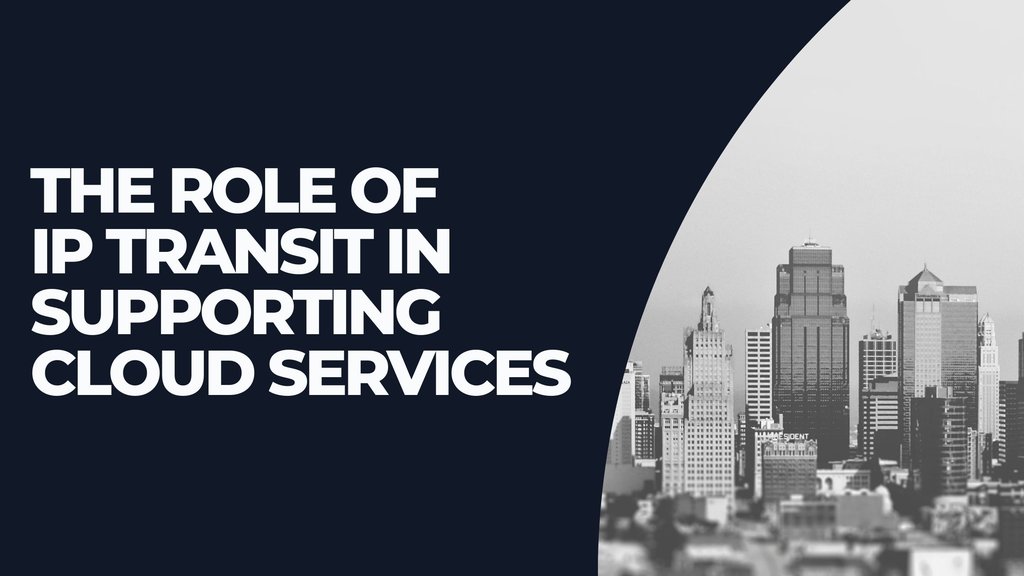Imagine this: mid-presentation, your cloud-based application grinds to a halt, and your video conference buffers endlessly. All you can do is wait patiently for everything to load properly, praying your connection won't drop out. You feel the need for a saviour: enter IP Transit.
IP Transit is your global superhighway, seamlessly connecting content providers and end-users across the globe. Your data reaches anyone, anywhere, on any network, which is crucial for any cloud service provider (CSP). IP Transit offers connectivity to the entire internet, providing broader reach and accessibility for CSPs.
Relationship Between IP Transit and Cloud Services
IP Transit simplifies network management for CSPs, freeing them to focus on what they do best: enhancing their core offerings and making your digital experience smooth. Why? Because they've outsourced the complexities of internet routing to IP Transit experts.
Let's revisit the concept of "connectivity to the entire internet." IP Transit throws open the gates compared to peering agreements that limit access. This is a game-changer for CSPs.
The unmatched scalability and performance of IP Transit provides a high-bandwidth connection that can handle surges effortlessly, catering to CSPs' dynamic usage requirements based on end-user demand. Think of the different platforms that stream high-definition movies to millions of users simultaneously – that's the power of IP Transit in action. With its diverse routing paths, it ensures low latency for real-time applications like video conferencing and gaming. IP Transit eliminates the risk of CSPs losing customers due to a laggy cloud experience.
By ensuring fast and reliable access regardless of location, CSPs retain not only happy customers but loyal ones.
Challenges in IP Transit for Cloud Providers
As powerful a solution as IP Transit is for CSPs, there are some key challenges in this realm. Cost management is a balancing act for CSPs, who need to find the right balance between Quality of Service (QoS) and cost control. This means ensuring they have enough capacity to handle peak demand without incurring unnecessary expenses during lower usage periods.
Maintaining a good performance monitoring and optimisation system across a complex global network can be challenging. CSPs need robust monitoring tools and expertise to identify and troubleshoot bottlenecks that impact user experience.
Vendor lock-in is another concern. CSPs need to carefully evaluate different providers and competitive pricing. Security measures are also crucial, as data privacy regulations are becoming increasingly complex and vary by region. Make sure to partner with an IP Transit provider who can ensure compliance with relevant data residency and security regulations, especially when dealing with geographically dispersed customers.
Advances and Innovations in IP Transit
For the unmatched performance, global reach, and unparalleled user experience of the next generation and future of cloud services, innovation is a must for IP Transit providers. As it is never stagnant, the world of IP transit is ever evolving to meet the ever increasing demands of cloud services and the world of internet as a whole. The possibilities are limitless, and the potential is boundless. Here are some:
Sofware-Defined Networking (SDN): Separation of control plane (network management) from the data plane (data forwarding) Allowed for greater flexibility, automation and real-time traffic optimization for a more dynamic and efficient cloud experience.
Many businesses utilize services from multiple cloud providers. SND allows for the creation of virtual networks that span across different cloud environments, simplifying network management that enables them to offer more complex and integrated solutions to customers.
In line with SDN is Content Delivery Network (CDN) Optimization, in a large e-commerce platform with global customers, routing content to different regions can be slow and inefficient, by implementing SDN with CDN, the CSP can dynamically adjust traffic flow based on real-time demand – content is cached closer to end user, leading to faster loading times and a smoother shopping experience.
With Dynamic Resource Allocation, SDN allows for real-time monitoring and allocation of processing power based on demand. This ensures CSPs can efficiently utilize their infrastructure and avoid bottlenecks.
These are just a few examples of the potential of one of the advancements of IP Transit paving the way for the future of CSPs, higher response rate, more secure while keeping it cost-effective.
Choosing the Right IP Transit Provider for Cloud Services
Choosing an IP transit provider is about secure, high-performance connections. Nexthop delivers. Our full-featured Arista network offers:
Full Routing Visibility: Choose routes or leverage BGP through our tier-one connections for ultimate control.
Extensive Network Reach: Reach the largest population centers in Australia with our robust network footprint.
Scalability and Flexibility: Grow with us. We offer burstable access, flexible contracts, and billing models to adapt to your needs.
Considering Nexthop for IP Transit? We prioritize your needs. Choose routes with our global network, control traffic via BGP communities, and gain full routing visibility. Our scalable solutions with burstable access and flexible contracts ensure smooth growth. Contact us to explore a partnership for seamless connectivity.





